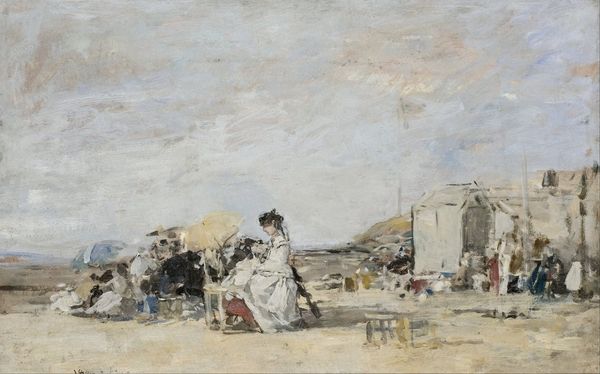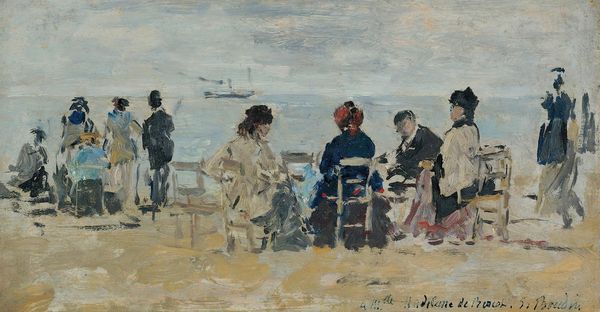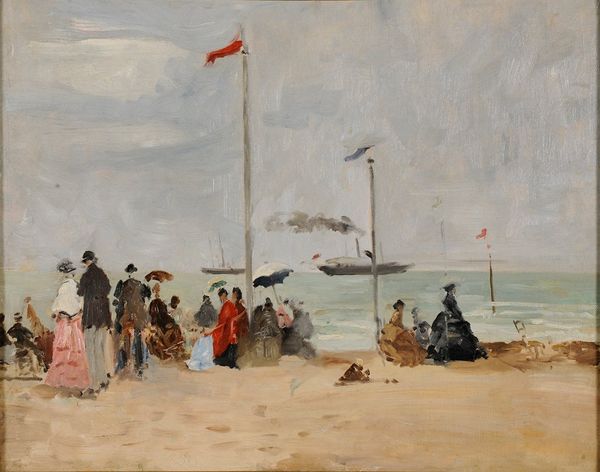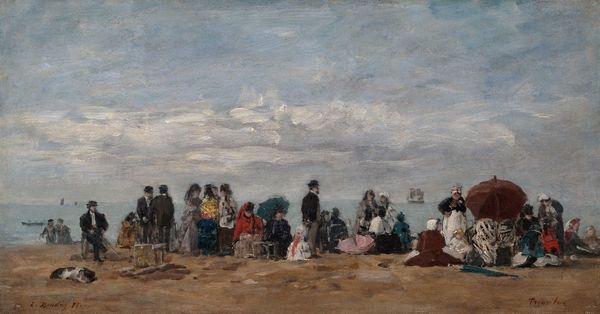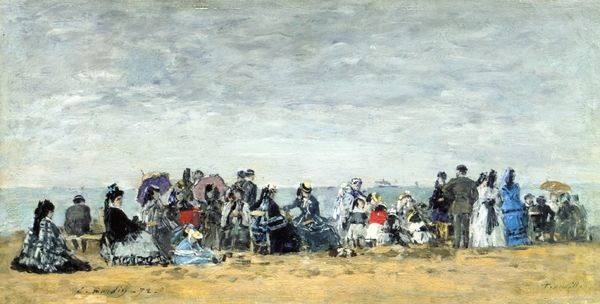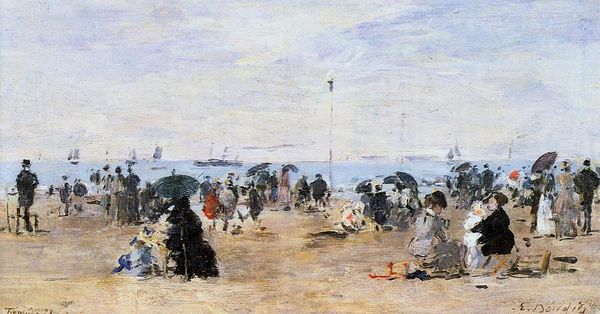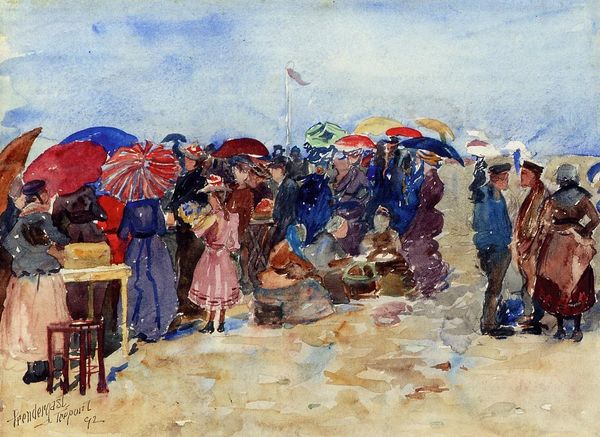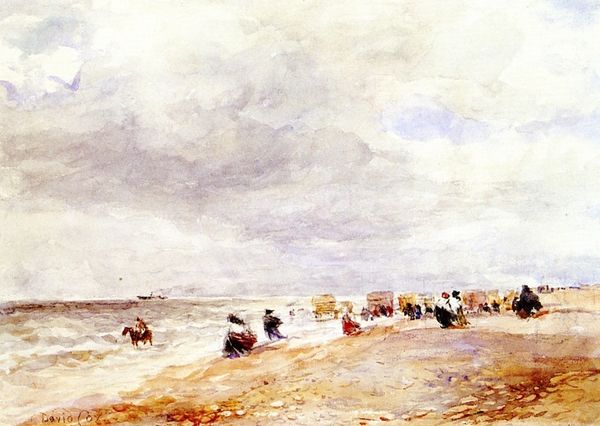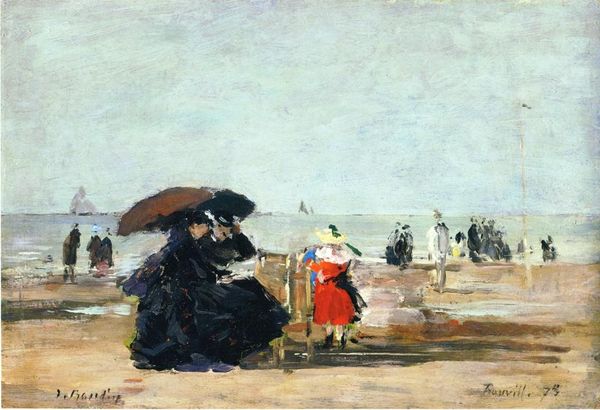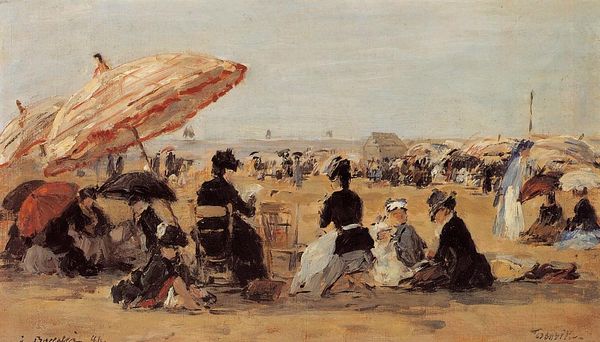
plein-air, oil-paint
#
impressionism
#
plein-air
#
oil-paint
#
landscape
#
impressionist landscape
#
oil painting
#
genre-painting
Copyright: Public domain
Editor: Here we have Eugène Boudin's "Trouville, scene on the beach", an oil painting. The figures seem quickly rendered, yet their fashionable attire is carefully described. What strikes you most about this work? Curator: Well, the appeal here lies in the depiction of leisure and its context. These aren't just anonymous figures on a beach, but consumers enacting new social rituals made possible by industrial production. Consider the mass-produced parasols and clothing. They are potent symbols of the rising bourgeoisie. Editor: So, it's less about the people themselves, and more about what their possessions represent? Curator: Precisely. The act of painting *en plein air* also adds another layer. Boudin documents this seaside leisure not in a studio, but directly at the site, grappling with the conditions of production—the wind, the light, the fleeting moment. The painting becomes a document of a specific time and place and social class. What does painting on-site do to the look of it? Editor: It feels very immediate, almost like a snapshot. The brushstrokes are so loose. Curator: And that looseness, that visible brushwork, underscores the hand of the artist and the physical act of creation. The paint itself becomes a key element. It’s about materiality and labor and consumption made visible through brushstrokes. How do you view this kind of painting differently now? Editor: I didn’t initially consider how the clothes, the umbrellas were made, and the implications of painting on site in that period. Seeing the consumer culture through the material of paint is eye-opening! Curator: Indeed. By exploring the intersection of materials, labour and leisure we arrive at new perspectives.
Comments
No comments
Be the first to comment and join the conversation on the ultimate creative platform.
